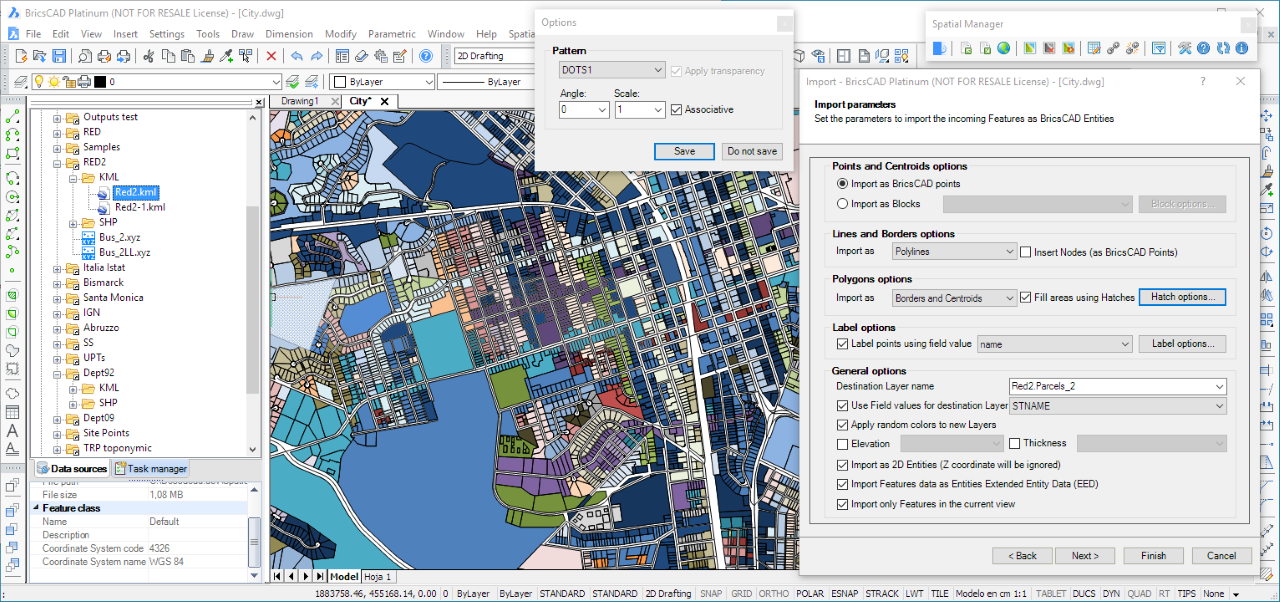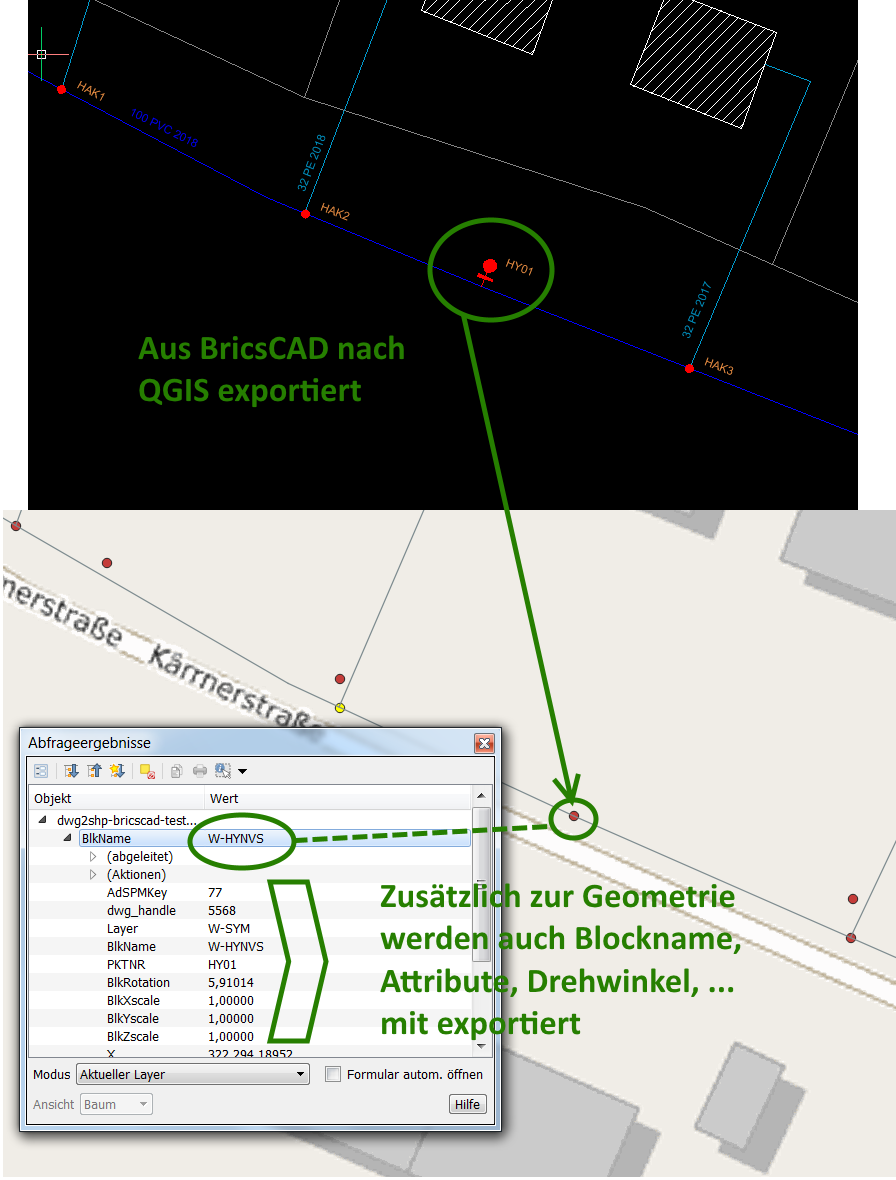

The “Tasks” save all the import processes parameters and options in order to repeat these processes so many times as desired. There are some advanced and powerful techniques to speed up the import processes, such as Import-all sources from a folder, database schema or multi-table file and others. Spatial Manager™ for BricsCAD imports spatial data, into new or existing BricsCAD drawings, as BricsCAD entities and Extended Entity Data (EED), using a powerful wizard which lets the user choose or select all the necessary import parameters in order to get differentiated spatial information in a CAD drawing.īatch-import, automatic layering, fill of polygons, blocks according data values and mapped attributes, labeling, elevation, thickness or the spatial filter are only part of the application functionality when importing from spatial files, data servers, data stores, etc. Related wiki information… BricsCAD import It comes in a lightweight application that runs inside BricsCAD and allows the user to import and export geospatial data between BricsCAD drawings and geospatial files, data servers or data stores, display background maps and manage alphanumeric data and data tables.

Spatial Manager™ for BricsCAD is a powerful BricsCAD plug-in designed for BricsCAD users who need to import, export and manage spatial data in a simple, fast and inexpensive way, which includes many possibilities not seen so far in BricsCAD. Interface simple, intuitive and productive.Save Tasks to replay the import processes so many times as desired.Alphanumeric data tables as BricsCAD Extended Entity Data (EED).Terrain functions including 3D points from elevation services, DTM meshes, contours, etc.Backgrounds Maps, powerful and easy to use.Export from BricsCAD to Google Earth (KML or KMZ), Shapefiles (SHP), Points (many formats), MapInfo, PostGIS, SQL Server, SQLite, and many more geospatial targets.Import into BricsCAD from Google Earth (KML or KMZ), OpenStreetMap (OSM or PBF), Shapefiles (SHP), GPS, Points (many formats), Excel, Access, ESRI ArcInfo®, MapInfo, GML (GML or GZ), PostGIS, SQL Server, SQLite, and many more geospatial sources.


 0 kommentar(er)
0 kommentar(er)
